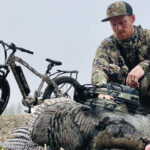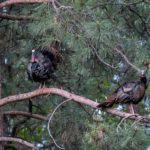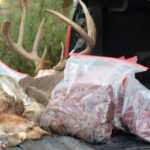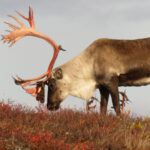Deer hunting in the late season can be tough. Depending on the food sources you have access to, deer activity can be a feast or famine situation. But there are some basics on a deer’s late season diet you need to know about. We reached out to Brian Murphy of HuntStand for a closer look at what hunters need to know about late season food sources for the white-tailed deer.
Check out what he had to say below.
A Drastically Changing Diet
“Throughout their range, the whitetail’s diet changes drastically during winter,” says Murphy. “Following a summer diet of native plants and agricultural crops, both of which are highly nutritious and digestible, the whitetail’s diet shifts to lower quality, less digestible forages – and one needing digestible energy in the form of carbohydrates.”
Murphy says it goes even deeper than that, however. In fact, the communities of microflora or “bugs” in their stomachs even change to allow them to capitalize on this dietary shift. “This is why the sudden introduction of ‘hot feeds’ during the late winter stress period can be detrimental, even fatal,” says Murphy. “Their stomachs just can’t handle the quick dietary shift.”
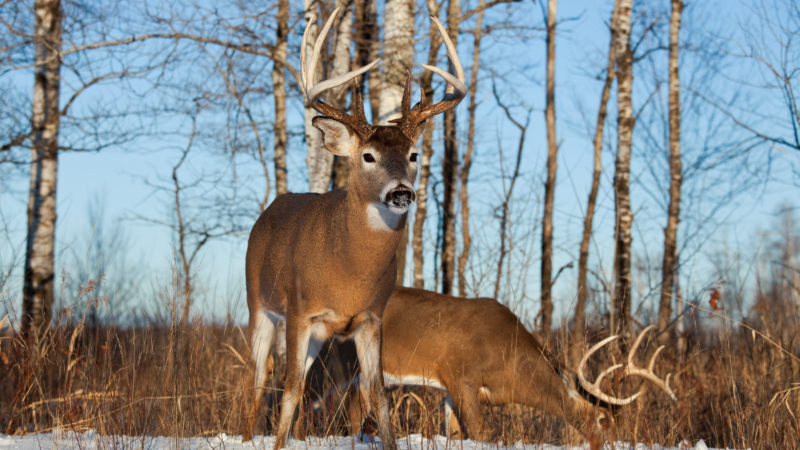
How Do Deer React to the Late Season Change?
Murphy says deer will seek out any remaining food plots or agriculture fields in an effort to address their nutritional and energy demands.
“Top winter choices include corn and soybeans,” says Murphy. “They’ll also key in on brassicas, turnips, clovers, and cold-tolerant cereal grains such as wheat, oats, and rye.”
“Where available, late-dropping species of apples also can be highly preferred during winter. Any remaining acorns, especially those from the red oak family also will be key food sources. Red oak acorns have higher tannin levels than white oaks, meaning they are less preferred, but this allows them to resist rot and remain available later into winter.”
The Nitty Gritty on Natural Food Sources
Don’t have access to food plots or agriculture fields on the properties you hunt? No problem! Native food sources play a critical role in a whitetail’s winter diet. “Across the eastern United States, deer will focus on the leaves, stems, and sprouts of desired hardwood tree species including oaks, maples, dogwoods, and sassafras,” says Murphy.
“In the northern United States, white cedar, basswood, and yew also are highly preferred. In the southern United States, deer typically target woody shrubs and vines including green briar, Japanese honeysuckle, and poison oak/ivy. Where present, a great place to find deer during late season in the South is in Chinese privet thickets. While not at the top of the whitetail’s food preference list, privet remains green and reasonably digestible during winter, while also providing great cover.”
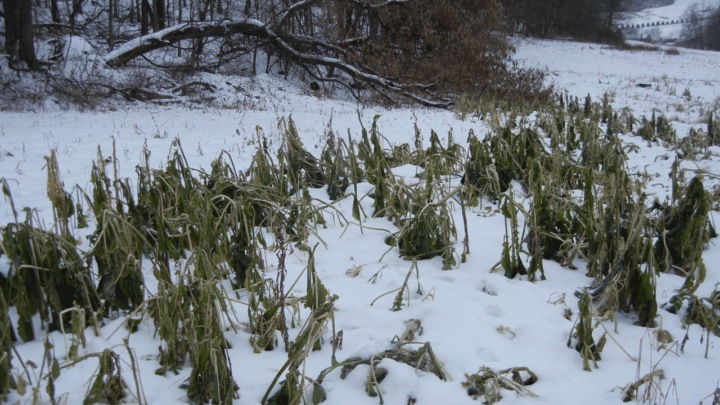
Where to Look
A lot of hunters complain that deer have gone missing on the properties they hunt. So where have they gone? Where are they hanging out in the late season? Murphy says to pay attention to south- and west-facing slopes when scouting for winter food sources, as these areas get the most hours of intense sunlight and therefore typically have the greatest forage availability during winter.
“Hunters should also avoid hardwood forests with little understory,” says Murphy. Research clearly shows increased use of ‘thickets’ by deer during winter, as these areas offer both food and cover. Recent clear cuts or thinned timber stands are great places to focus, as are thick gullies and overgrown fields. Simply stated, go deep and thick for winter whitetails. If you can’t see very far, you are in the right place!”
If you’ve still got a tag in your pocket, keep after it! Bucks will be on the rebound and working towards building back up after the rigors of the rut. Find the right food sources and you just might find the opportunity to notch a tag in the late season.

 By
By 